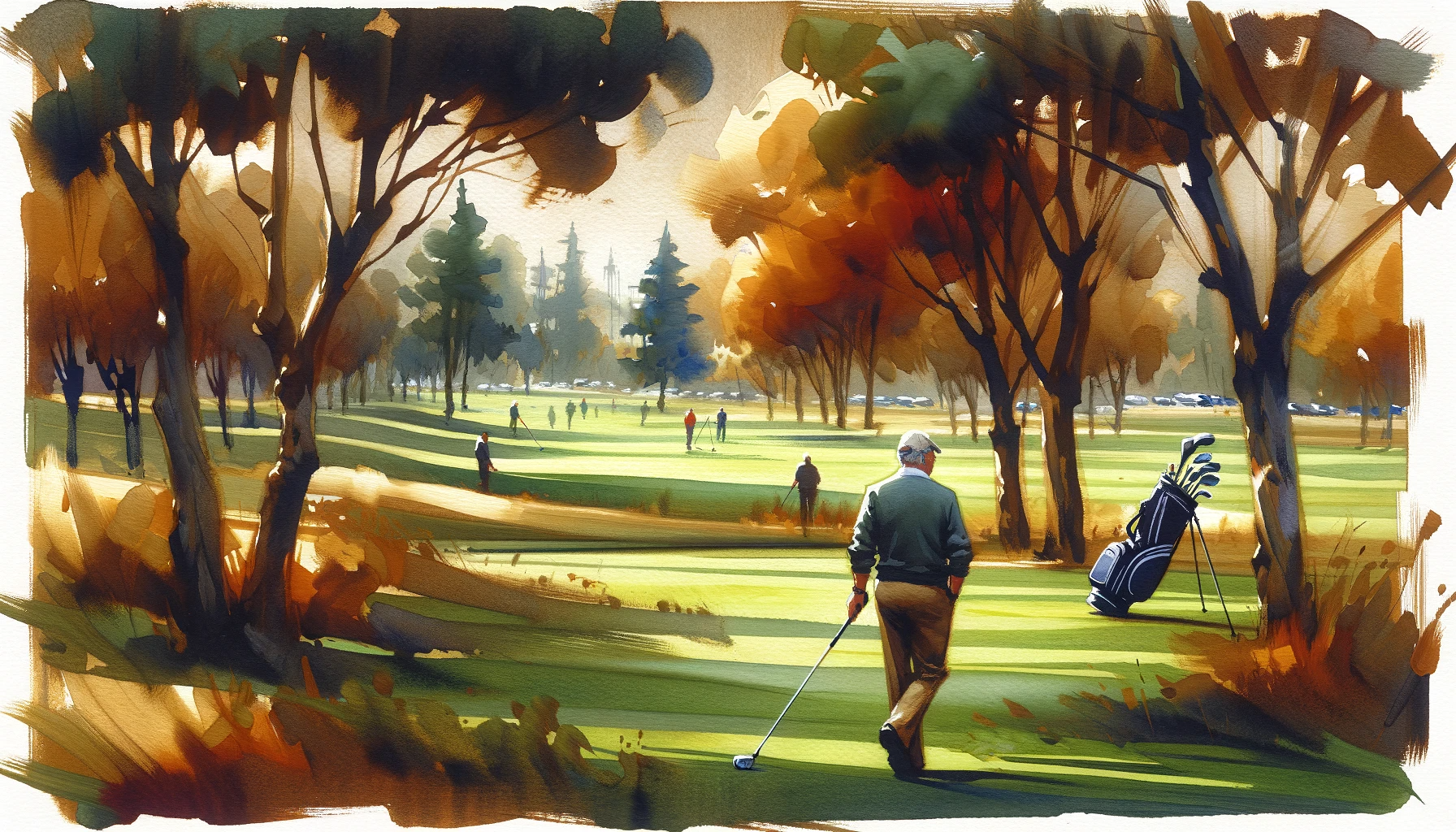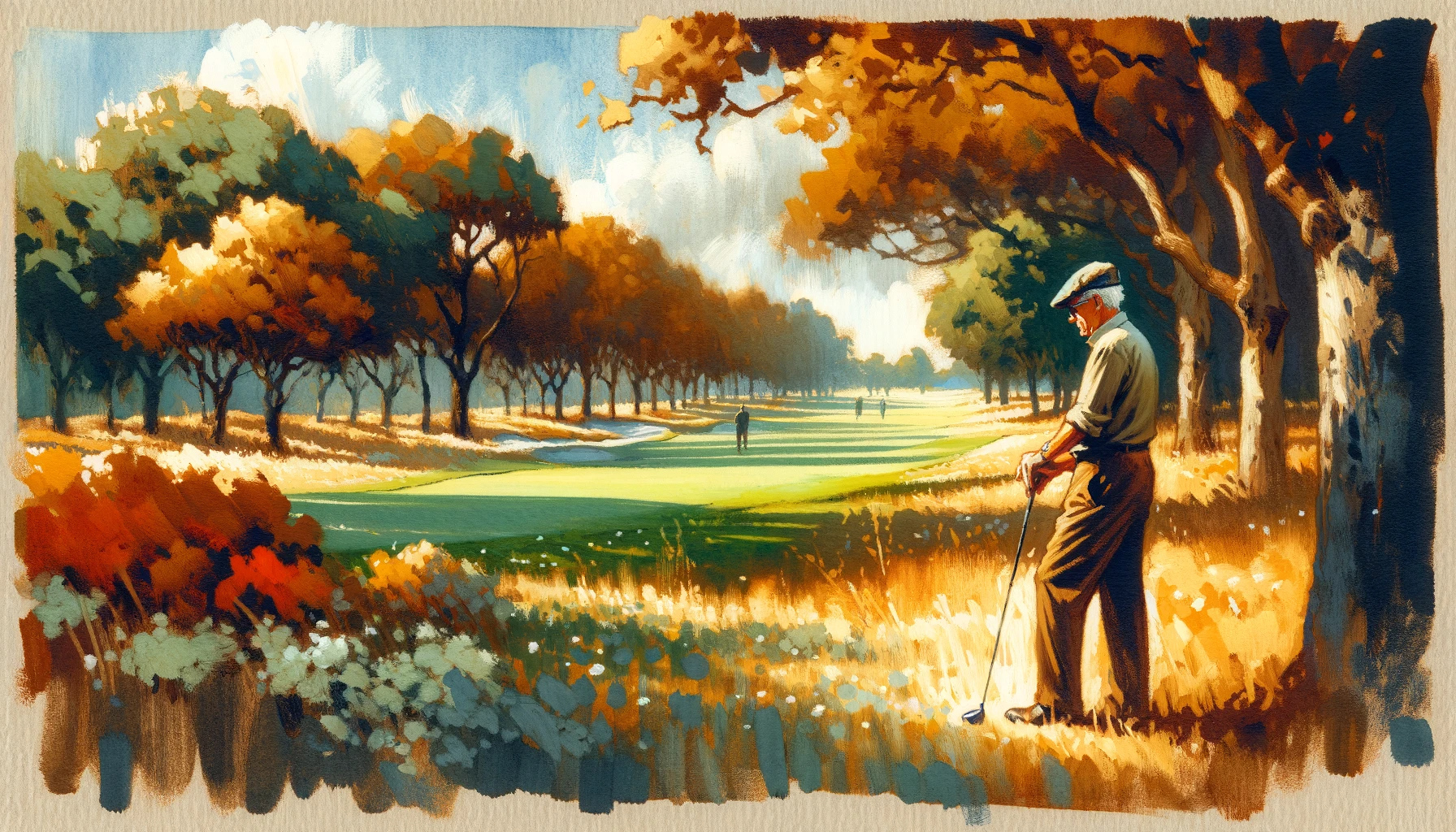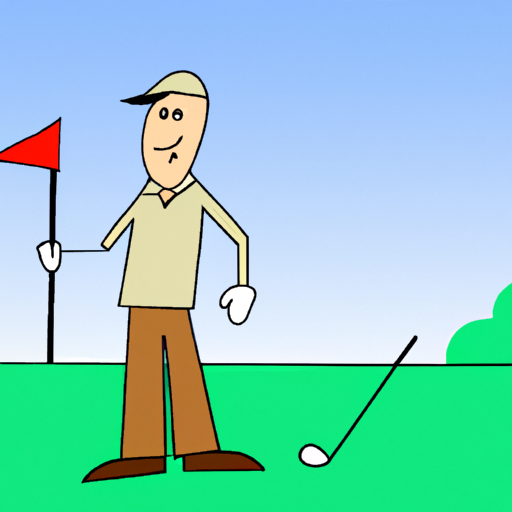- Home
- Hitting Irons
- Shanking Irons All of a Sudden
Shanking Irons All of a Sudden: Here's How to Correct It Fast
Are you struggling with shanking irons all of a sudden? You're not alone. Many golfers face this unexpected challenge, but there's hope. In just a few minutes, I'll reveal practical, easy-to-implement tips that have transformed my game and can do the same for yours. From identifying the cause to making swift corrections, this guide is your ticket to a shank-free game. Plus, don't miss the FAQ section at the end for quick answers, especially if you're pressed for time. Let's get your iron shots back on track and enjoy the game to its fullest!
Hey fellow golfer,
Have you ever experienced that frustrating moment when, out of nowhere, your reliable iron shots betray you, turning into dreaded shanks? It's like one day you're hitting them clean and straight, and the next, you're sending balls shooting off at wild angles, missing your targets by embarrassing margins. This sudden shift can feel baffling and demoralizing, making you question your skills and shaking your confidence on the course.
As someone who's been through this ordeal, I know the agony it brings. You might find yourself obsessing over what went wrong, endlessly analyzing your swing, grip, stance, and equipment. It's maddening, isn't it? This problem isn't just about technique; it's a mental game too. The fear of shanking can creep into your head, affecting every iron shot you take.
But here's some good news: you're not alone in this struggle, and there are proven solutions to conquer these sudden iron shanks. In this comprehensive guide, we'll explore the causes, dissect the mechanics, and most importantly, provide you with actionable steps to correct your swing and regain your confidence. From easy-to-implement techniques to insider tips, you'll find everything you need to turn those shanks into stellar shots again. So, let's dive in and take back control of your iron game!
 A serene golf course moment: Beyond sudden shanks
A serene golf course moment: Beyond sudden shanksWhy Do Golfers Suddenly Start Shanking Irons?
Let me share a story that might sound familiar. Picture this: a beautiful day on the course, everything's going great, and then, out of the blue, your trusted iron betrays you. The ball veers off sharply, a classic shank. It happened to me last season, and it was bewildering. One minute I was on top of my game, the next, I felt like a beginner. So, why does this happen?
1. Technical Flaws: Often, shanks start when there's a subtle change in our swing. Maybe you're standing too close to the ball, or your clubface is opening up at impact. These small deviations can lead to big problems.
2. Equipment Issues: Believe it or not, sometimes it's not you, it's your clubs. Worn out grips, clubs that don't fit your style, or even the wrong lie angle can send your ball on an unwanted journey.
3. Mental Blocks: Golf is as much a mental game as it is physical. Stress, overthinking, or even a lack of focus can manifest physically in your swing.
4. Physical Changes: Maybe you've been hitting the gym, and your increased strength is altering your swing dynamics. Or perhaps it's a subtle injury you're not fully aware of.
The day it happened to me, I realized I was standing too close to the ball. Adjusting my stance felt awkward at first, but it made a world of difference. Remember, diagnosing a shank requires a bit of detective work. Review these areas, and don't be afraid to seek help from a pro. A fresh pair of eyes can spot things you might miss.
In the next section, we'll look into specific causes of iron shanks in golf and how to tackle them. Stay tuned, because understanding the problem is the first step to fixing it!
 Capturing the elegance of golf in the midst of a challenge
Capturing the elegance of golf in the midst of a challengeWhat Causes Iron Shanks in Golf?
Let's dive deeper into what causes those pesky iron shanks. Remember my story about suddenly shanking shots? Well, understanding the root causes helped me, and I'm sure it will help you too.
1. Improper Stance and Alignment: Your stance is the foundation of your swing. If you're too close to the ball, it can lead to shanks. Alignment is key too. Misalignments can cause you to adjust mid-swing, leading to mishits.
2. Swing Path Issues: Are you coming too much inside or outside on your downswing? These errors can lead to the dreaded hosel rocket.
3. Clubface Control: A clubface that's not square at impact can send your ball off course. This can be due to grip issues or incorrect hand positions.
4. Psychological Factors: Ever hit a great shot, then shank the next one? The fear of shanking can actually increase your chances of doing it. It's a self-fulfilling prophecy!
5. Physical Limitations: Ignoring body limitations can lead to compensations in your swing. Flexibility, strength, and even fatigue play roles in your swing mechanics.
6. Equipment Misfit: Using clubs that aren't suited to your style, body type, or skill level can cause unexpected problems. Even a slight change in club weight or length can impact your swing.
After a frustrating round of shanks, I realized my alignment was off. I was aiming too far left, causing me to overcompensate. It took some practice, but correcting my alignment helped me eliminate those shanks.
In the following sections, we'll explore strategies to fix iron shanks. Whether it's a tweak in your stance, a mental reset, or a club check-up, we've got you covered. Because every problem has a solution, and I'm here to help you find yours!
 The weekend golfer's journey: Serenity amidst the game's trials
The weekend golfer's journey: Serenity amidst the game's trialsHow Can I Fix My Iron Shanks Quickly?
Alright, let's get down to business. How can you quickly fix those iron shanks? I've been there, desperately searching for a solution after a particularly embarrassing round. Here's what I learned:
1. Check Your Stance: Make sure you're not too close or too far from the ball. A balanced, comfortable distance is key. Experiment a bit to find the sweet spot.
2. Swing Path Adjustment: Work on a consistent swing path. Avoid coming too inside or outside. Think about swinging the club back and through on a straight line.
3. Focus on Clubface Control: Practice keeping your clubface square to your target line. This can be a game-changer. I spent hours on the range just focusing on this aspect.
4. Mental Reset: Sometimes, it's all in your head. Take a deep breath, clear your mind, and reset. Don't let the fear of shanking control your game.
5. Physical Fitness: Ensure you're physically capable of performing the necessary swing movements. Simple stretches and strength exercises can make a big difference.
6. Equipment Check: Make sure your clubs are suited to your play style and physical characteristics. Sometimes, a small adjustment in club length or lie angle can have a significant impact.
7. Professional Guidance: Don't hesitate to seek help from a golf pro. Sometimes, an expert eye can spot and correct errors quickly.
After trying these steps, especially working on my clubface control and mental approach, I saw a dramatic decrease in shanks. It wasn't overnight, but with consistent practice, I got there.
Remember, quick fixes might give immediate relief, but lasting improvement comes from understanding and addressing the root causes. Keep practicing, stay patient, and you'll overcome those shanks in no time!
 Elegance and experience merge on a golfer's path
Elegance and experience merge on a golfer's pathKey Takeaways
As we wrap up our journey through understanding and tackling the sudden shank syndrome, let's highlight the key takeaways:
1. Understand the Causes: Recognize that shanks can stem from technical, mental, physical, and equipment-related issues.
2. Practice Self-Diagnosis: Use the insights provided to analyze your own game. What's causing your shanks?
3. Implement Solutions: Experiment with stance, swing path, clubface control, and mental strategies. Remember, what works for one golfer might not work for another.
4. Seek Professional Help: Don't shy away from getting a second opinion from a golf pro.
5. Stay Committed: Consistency is key. Regular practice and mental conditioning will pay off.
Now, it's your turn to take action. Dive into your golf game, identify those pesky shanks, and apply the solutions we've discussed. But don't stop there. Engage with our Golfeaser community, share your stories, struggles, and victories. Sign up for our newsletter to stay updated with the latest golf tips, stories, and community insights.
Keep living by the Golfeaser Manifesto, embrace the challenges, and enjoy your journey in the beautiful game of golf. And remember, we're all in this together, one swing at a time.
So, what's your shank story? Have you conquered it, or are you still on the journey? Let us know, and let's tackle this challenge together!
FAQ About Shanking Irons All of a Sudden
Why do golfers start shanking irons all of a sudden?
Why do golfers start shanking irons all of a sudden?
Shanking can occur unexpectedly due to changes in stance, swing path, mental state, or even equipment issues. Identifying the specific cause is key to finding a solution.
What is the main reason for shanking golf shots?
What is the main reason for shanking golf shots?
The most common reason for shanking is incorrect alignment or positioning of the club at impact, often caused by standing too close to the ball.
How do I stop shanking my irons suddenly?
How do I stop shanking my irons suddenly?
Adjust your stance and posture, ensure proper clubface alignment, and practice consistent swing mechanics. Mental focus and relaxation techniques can also help.
Can new golf clubs cause shanks?
Can new golf clubs cause shanks?
Yes, if the clubs are not properly fitted to your style and physique, they can contribute to shanking. It's important to use equipment that complements your playing technique.
Does grip affect shanking in golf?
Does grip affect shanking in golf?
Absolutely. An improper grip can lead to a misaligned clubface at impact, causing shanks. Ensure your grip is neither too tight nor too loose and correctly aligned.
What are the physical causes of sudden shanking?
What are the physical causes of sudden shanking?
Physical causes can include changes in body mechanics, strength, or flexibility. Even minor injuries or changes in physical condition can affect your swing.
How can mental pressure lead to shanking irons?
How can mental pressure lead to shanking irons?
Mental pressure can disrupt your focus, leading to tension in your swing and mistakes like shanking. Staying calm and focused is crucial to avoid mental-induced shanks.
What are the best drills to fix shanking?
What are the best drills to fix shanking?
Practicing drills that focus on alignment, swing path, and clubface control can effectively address shanking. Simple exercises like the alignment stick drill can be very helpful.
Can fatigue cause sudden shanking in golf?
Can fatigue cause sudden shanking in golf?
Yes, physical fatigue can alter your swing mechanics and timing, leading to shanks. Maintaining good physical condition and taking breaks when needed can prevent fatigue-related shanks.
How long does it take to correct shanking?
How long does it take to correct shanking?
The time it takes to correct shanking varies based on the underlying cause and your ability to adapt to changes. With consistent practice, improvement can be seen in a few sessions.










